The presentation on low-frequency deconvolution of seismic sensor records for local and regional seismology applications was made by Petr Dergach, a researcher from the Laboratory of Dynamic Analysis in Seismology, at the geophysical seminar of IPGG SB RAS. This presentation was based on materials of his dissertation for the degree of Candidate (PhD) in technical sciences, specialty 1.6.9 Geophysics (supervisor: Anton Duchkov, PhD (phys.-math.)).
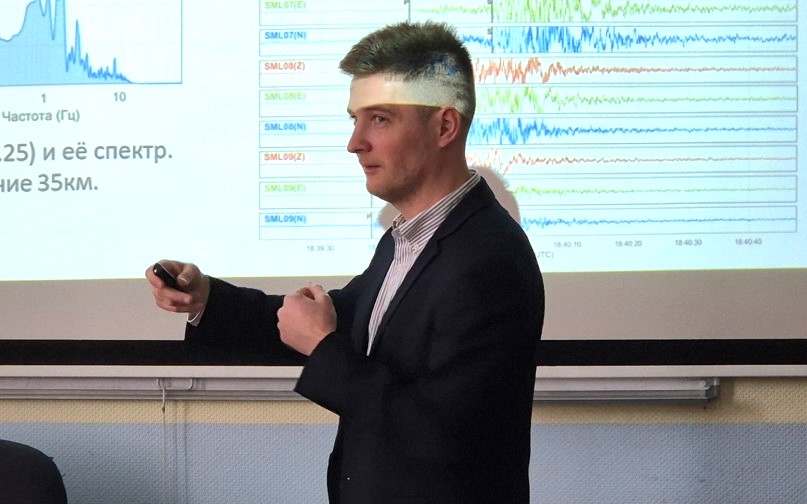
Petr Dergach
The research is devoted to the study of the possibilities of expanding the frequency range of sensor-recorded signals to the region of lower frequencies for electrodynamic seismic receivers (geophones) which allows using them for seismological records.
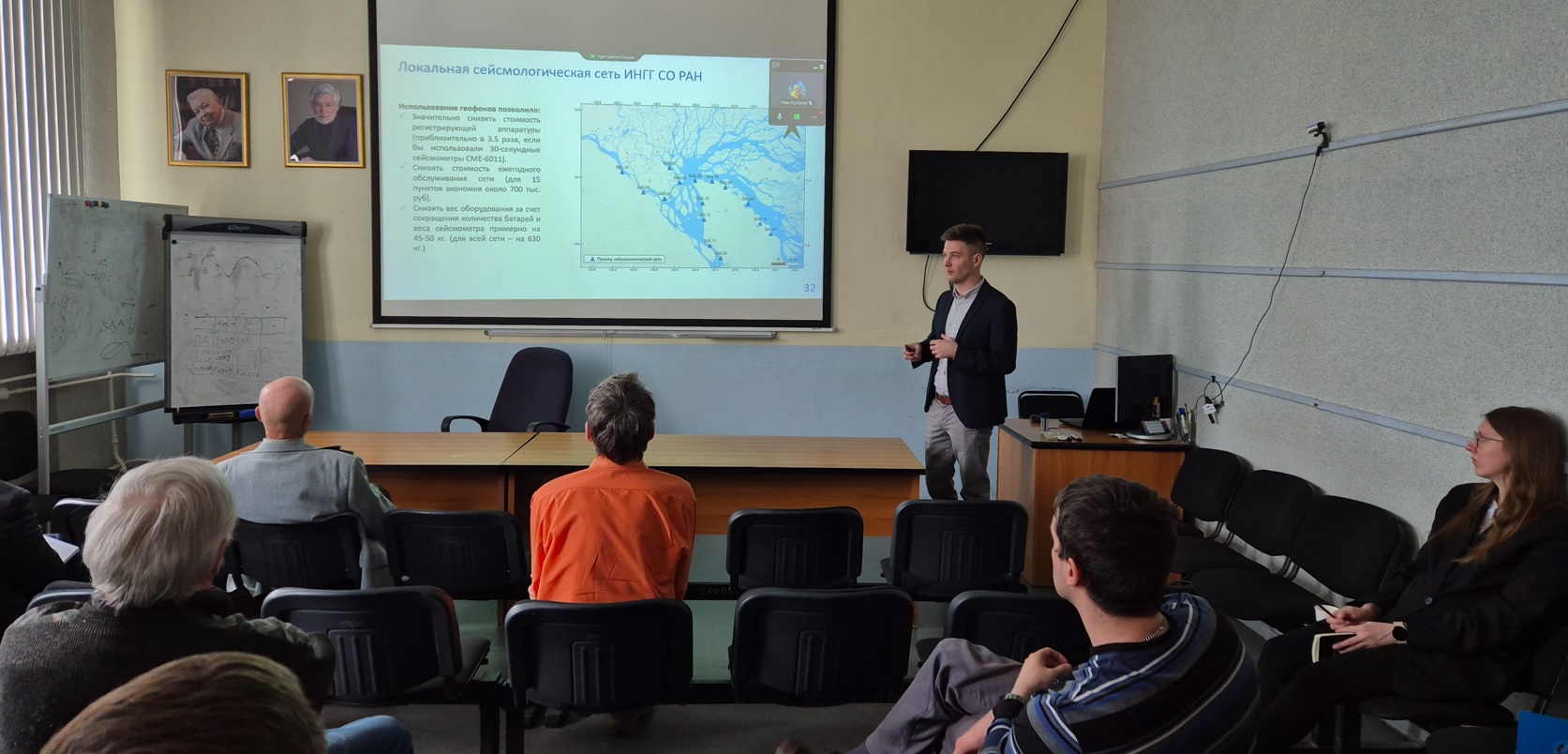
Pyotr Dergach studied the influence of possible deviations from the geophone parameters which can be found from its technical description on the result of data processing by the low-frequency deconvolution method. The method of these parameters determination known as the step (jump) calibration method, i.e. absolute calibration of seismic sensors using a displacement jump (based on the use of a purely mechanical impact on only the sensor housing) has been theoretically justified. A practical implementation of the method is shown by the example of calibration of a 10 Hz geophone.
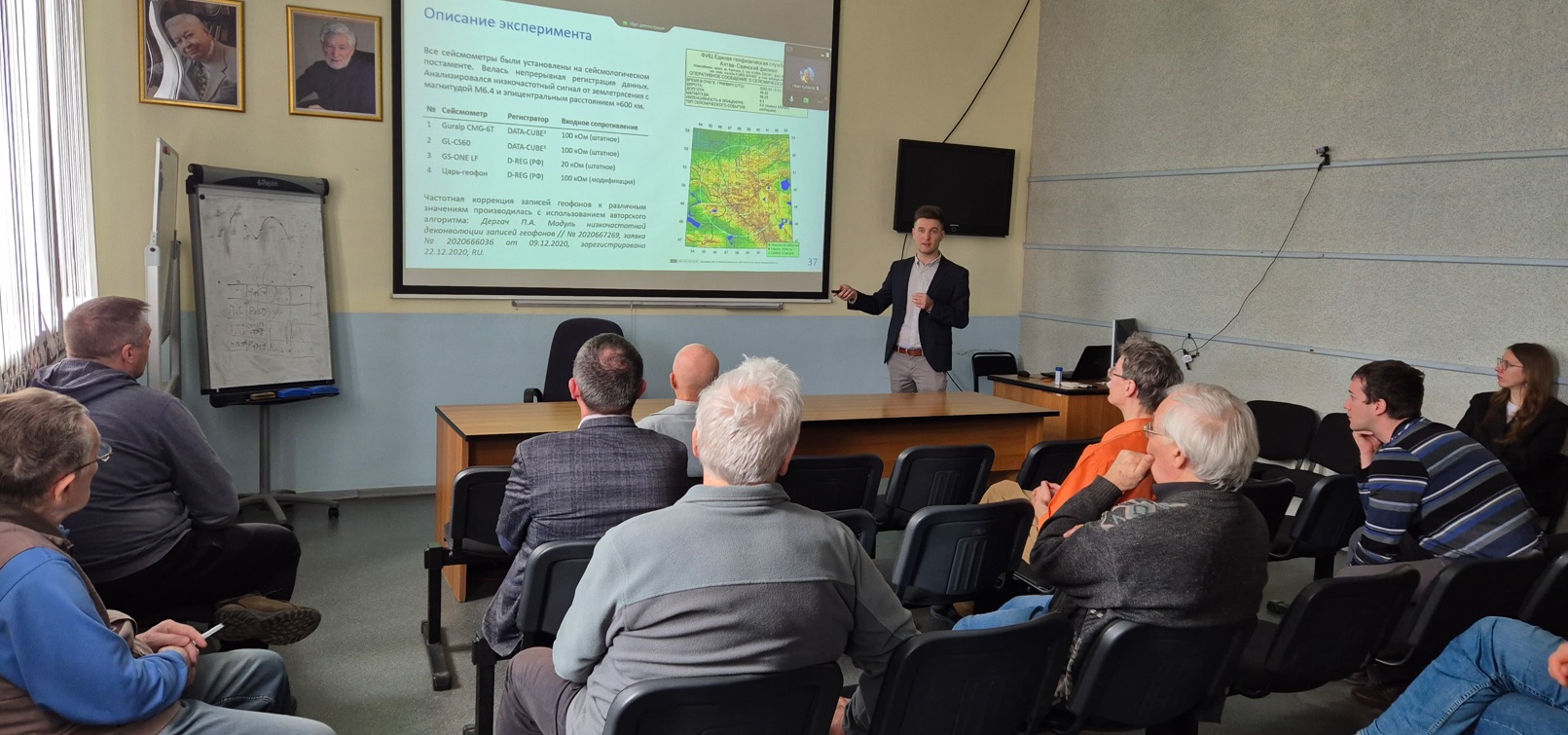
A methodology was developed to determine permissible limits for expanding the frequency range of records to the region of lower frequencies for these sensors depending on the amplitudes of instrumental noise and the target seismic signal (in a certain magnitude spectrum of an earthquake).
The method was tested for different versions of geophones and seismicity recording equipment using the author’s records of earthquakes in different regions of the Russian Federation. The effectiveness of the method was demonstrated on the example of the seismometer designed by the author based on 5-Hertz geophones, with analysis of recent earthquakes records obtained in the Altai Republic and Myanmar.
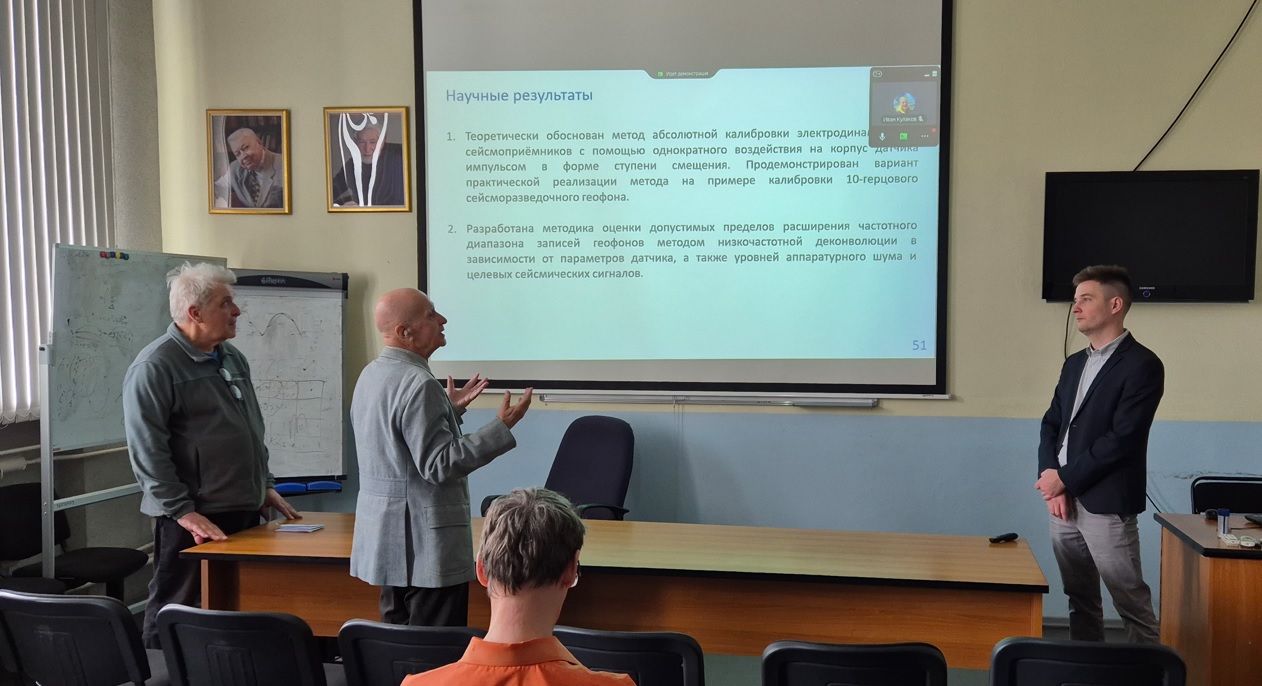
Receiving question from B.P. Sibiryakov
– Using geophones (instead of expensive broadband seismometers) in combination with the low-frequency deconvolution method allows a significant reduction in the cost of the recording system employed by local and regional seismological networks. Among its fundamental advantage is that it does not need external power, which is advantageous for setting up temporary networks, - Petr Dergach remarked.
The presentation which was of great interest to the audience aroused lively discussion with many questions asked by the participants: V.A. Cheverda, D Sc (phys.-math.), P.O. Polyansky, PhD (geol.-mineral.), B.P. Sibiryakov, D Sc (phys.-math.), M.I. Protasov, D Sc (phys.-math.), V.V. Potapov, PhD (tech.), A.V. Belyashov, PhD (geol.-mineral.), A.V. Liseikin, PhD (geol.-mineral.), A.M. Eisenberg, PhD (phys.-math.), V.Y. Timofeev, D Sc (phys.-math.) and other specialists.
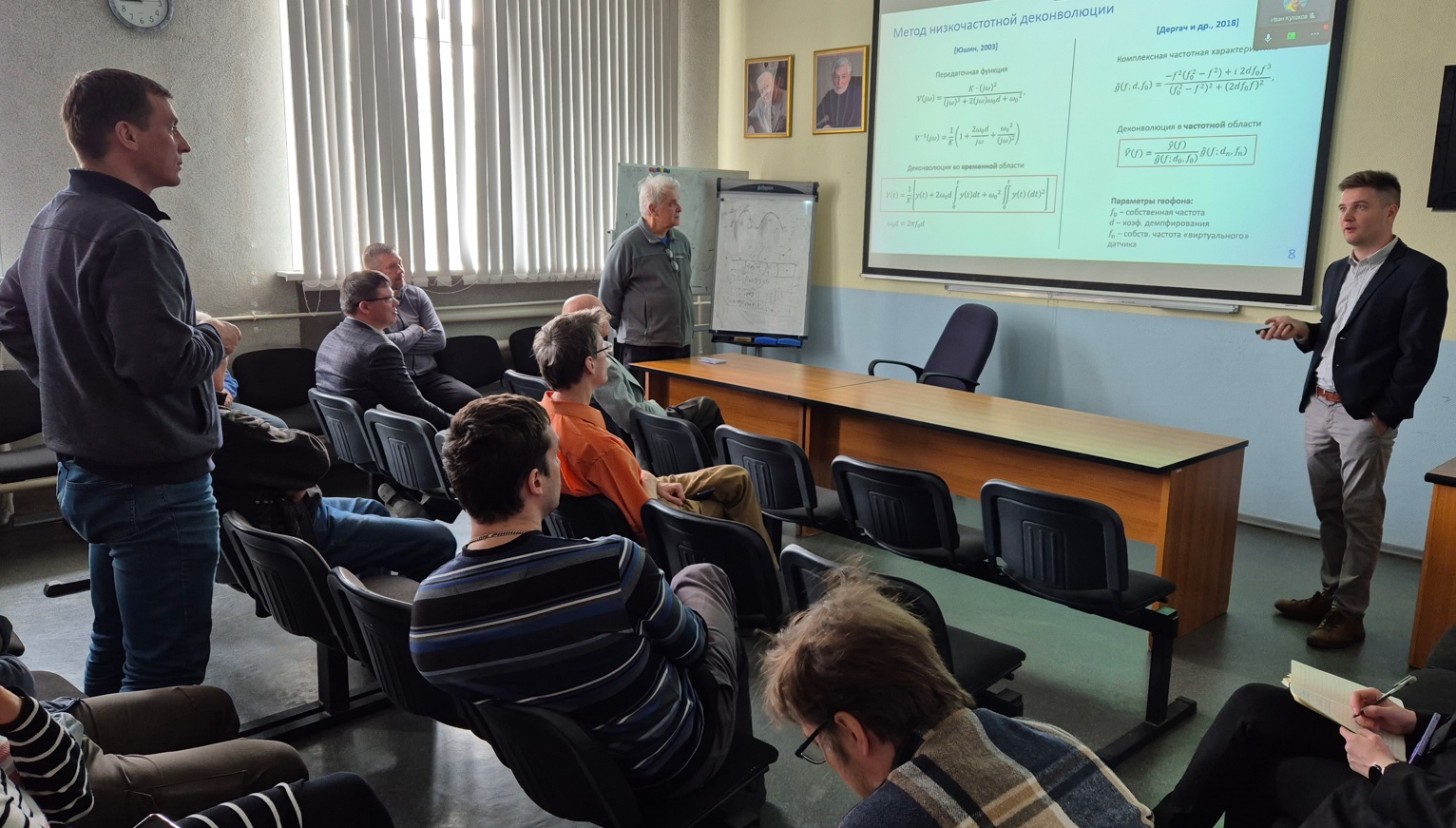
Petr Dergach answering question posed by M.I. Protasov
Published by IPGG Press Service